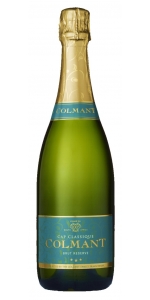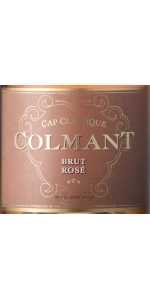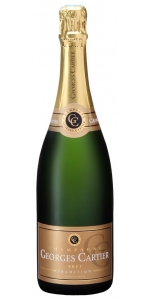Pierre Olivier Brut Vin Mousseux NV
Pierre Olivier Brut Vin Mousseux NV is made from 100% Airen.
A value sparkling brut, made with Airen grapes from around the French/Spanish border (next to the Pyrenees). This is a new Kysela Project.
The bubbles are obtained using the Charmat method, named after Eugene Charmat, where the second fermentation takes places in a large, closed pressurized tank. It is different from the Methode Champanoise as the secondary fermentation doesn't take place in the bottle.
Intense mahogany. Deep aroma of dried fruits (raisins, figs) bouquet subtle notes of chocolate and coffee. Smooth and velvety in the mouth with a long after taste.
To be served with desserts, at room temperature or slightly chilled, delicious poured over ice cream.
Review:
"Violet color. Aromas and flavors of mashed raisins and prunes and chocolate nuts with a bright, sweet medium-full body and a subtle, long fig paste, mincemeat pie, and baklava finish with no oak. A rich and toothsome PX Sherry with great length and depth."
- Tastings, 2018 World Wine Championships, 93 pts - "EXCEPTIONAL"
Pierre Olivier Sparkling Rose NV is a value sparkling rosé, made with Tempranillo grapes from around the French/Spanish border (next to the Pyrenees). This is a new Kysela Project.
This wine is aromatized with a very little amount of Raspberry flavor, giving a nice mouthfeel, with an extra aromatic boost.
The bubbles are obtained using the Charmat method, named after Eugene Charmat, where the second fermentation takes places in a large, closed pressurized tank. It is different from the Methode Champanoise as the secondary fermentation doesn't take place in the bottle.
"Pale pink salmon. Just a touch off-dry, this is a very pleasant sparkler that reveals aromas of spicy red apple with a hint of cinnamon that carry through to the palate. Well made and exceedingly pleasant to drink."
- International Wine Review (Annual Rosé Report / April 2013), 89 pts
Rubus Brut Rose is made from 60% Tempranillo, 40% Bobal.
The Rubus Project was created by Fran Kysela as a way to source & sell incredible wines at value prices. All wines in this international project are hand-selected by Fran Kysela. Rubus wines are fruit driven, true-to-type values that over deliver - a true representation of quality for the consumer at an excellent price.
Stunning salmon-pink hues. The nose is intense and fine, dominated by notes of red berries. On the palate, the combination of fine bubbles and delicate aromas produces a delightfully light and silky rosé.
Machine harvest. The base wine is fermented at a low temperature. The second fermentation takes place at 14°C for 2 weeks, followed by dosing.
Dry but fruity with a complex nose of tropical fruit and enhancing biscuit flavours. Crisp acid ensures a fresh, clean and verydrinkable sparkling wine.
Serving suggestion: Well chilled to make any occasion festive.
THE LEGEND
Dispatched by Jan van Riebeek in search of the perfect place to grow provisions for the Dutch East India Company, Pieter Cruythoff stumbled upon a beautiful valley. But it was more than just the scenic beauty of this valley that had caught his eye; situated in the lee of the majestic Kasteelberg, the winters were mild, the summers were hot and the soil was uncommonly fertile. What's more, ships spotted from the lookout point on Kasteelberg were just a day away from Cape Town, and so were the wagons that went to meet them, laden with the treasures of the Riebeek Valley.
TIMELESS JEWELS
While he humbly named the valley after his patron, Jan van Riebeek, we feel it is only fitting that our valley's most coveted treasure should carry the name of its founder. So, in honour of Pieter Cruythoff, this range of fine wine bears his name.
From the vibrant whites to the seductive reds, each one is a gem gently coaxed from the fertile soil of that same magical valley. Ironically, much of the valley's bounty still finds its way to Europe, and in particular to the Netherlands, the land of Cruythoff's birth.
Toso Asti Spumante is made with 100 percent Moscato d' Asti
Sweet, aromatic, fruity and floral sparkling wine, moderate in alcohol, with fine sparkle and long lasting perlage. Of yellow straw color, it is a fine and elegant wine, ideal to celebrate every joyful event.
Toso Asti Spumante is made from Moscato grapes grown on hills in the South of Piedmont An early picking insures a higher acidity and a more floral bouquet. The grapes are crushed immediately to avoid any oxidation which might detract from the wine's aromas. The grapes are gently crushed and the juice is settled, centrifuged and filtered. The purified musts are placed in stainless steel tanks and held at near freezing temperatures which blocks completely any fermentation. This enables the producers to draw batches of fresh must whenever they decide to bottle. The batch of must is then inoculated with special yeast and fermented in an autoclave to retain the naturally produced carbon dioxide. The fermentation is stopped by a rapid chilling when the wine reaches the desired ratio of alcohol (standardly 7%) to residual sugar ( 3-5% ). The wine is then filtered, bottled and, at Toso, immediately shipped to ensure the freshest product possible.
Fresh, a floral bouquet, a sweet, fruity taste, Excellent as aperitif, best enjoyed with fruit, dried pastries and desserts in general.
Cave Carod Clairette de Die is made from 75% Muscat Petits Grains and 25% Clairette. Clairette de Die is produced with the ancestral dioise method.
The grapes are rapidly pressed after the harvest and then placed in vats at low temperatures (replicating the process used by the Voconces in ancient times who kept the jars in the icy waters of their local rivers). The half-fermented must is bottled and fermentation continues in the bottle, giving a naturally sparkling wine. Disgorging occurs at least six months after bottling, while the wine still contains sugar and has reached an alcohol content of 7 to 9 %.
This is a sparkling wine with very fine bubbles, light in alcohol (8°), and containing residual sugar (incomplete fermentation). Clairette de Die has been known since ancient times (dates back to 77 A.D.). Clairette brings delicacy and lightness to the wine whereas Muscat gives its typical sweet flavor. The wine displays intense aromas, a refreshing balance of fruit and acidity with peach, orange and white flowers flavors.
This is an ideal wine for all desserts and ice creams, and is very interesting with foie gras. It is especially suitable for daytime meetings and cocktail parties. A great breakfast wine!
Wine to be consumed young, to conserve the full fruity and floral flavors. To be stored flat in a cool room away from light.
GOLD MEDAL - Effervescents du Monde 2010
GOLD MEDAL - Concours General Agricole de Paris 2012
SILVER MEDAL - Concours General Agricole de Paris 2011
Pierre Olivier Sparkling Rose NV is a value sparkling rosé, made with Tempranillo grapes from around the French/Spanish border (next to the Pyrenees). This is a new Kysela Project.
This wine is aromatized with a very little amount of Raspberry flavor, giving a nice mouthfeel, with an extra aromatic boost.
The bubbles are obtained using the Charmat method, named after Eugene Charmat, where the second fermentation takes places in a large, closed pressurized tank. It is different from the Methode Champanoise as the secondary fermentation doesn't take place in the bottle.
"Pale pink salmon. Just a touch off-dry, this is a very pleasant sparkler that reveals aromas of spicy red apple with a hint of cinnamon that carry through to the palate. Well made and exceedingly pleasant to drink."
- International Wine Review (Annual Rosé Report / April 2013), 89 pts
Roland Champion Champagne Non Vintage Brut Rose Carat (magnum) is made from 33% Chardonnay, 33% Pinot Meunier and 33% Pinot Noir
The Champagne rose shows an orange salmon color coming from the red wine base. The pinot meunier brings red fruit aromas of strawberry and raspberry with hints of spices. The palate is juicy and harmonious with good depth and minerality. A delicate balance between Chardonnay, Pinot Meunier and Pinot Noir.
It is a blend of 93% White juice (made from 33% Chardonnay, 33% Pinot Meunier and 33% Pinot Noir) and 7% Pinot Noir red wine. The grapes used to produce the Coteaux Champenois red wine are coming from their vineyards near the Village of Verneuil.
Review:
"Eye of the partridge color. With a bouquet that evokes leesy hints of red cherry and berry with a touch of stone fruit, this is a finely sculpted wine, beautifully balanced with rich flavors of cherry, shortbread,and a hint of honeyed apricot. A rosé Champagne that’s complex and dry with good palate depth and length. A blend of 20% Chardonnay, 40% Pinot Noir, and 40% Pinot Meunier; 7-85% of the juice is red wine (Pinot Noir) from 2013 vintage of Coteaux Champenois Rouge from the village of Verneuil. 3+ years on the lees." - I-WineReview (Champagne: Diversity and Change, January 2020), 92 pts
"A delicate, subtle Champagne, delivering aromatic notes of mulling spices and yeast that accent the flavors of kirsch, bread dough, candied lemon zest and rose petal. This is finely tuned, with lively acidity and a minerally finish. 330 cases made. –AN"
- Wine Spectator , 91 pts
"Bright orange. Aromas of blood orange, dried rose, allspice and minerals, with a subtle note of anise. Juicy and precise, with very good depth to its spicy red berry and citrus pith flavors. Finishes smooth and long, with excellent clarity and lingering spiciness."
- Stephen Tanzer's International Wine Cellar , 91 pts
"Champion is a small grower in Chouilly, in the Cotes des Blancs, an area known for fantastic chardonnay. This rosé — of which he makes only about 330 cases — includes 10 percent red wines (pinot noir, pinot meunier) to give it a pale, salmonlike color and a beguiling palate of cranberries, strawberries and currants. Wow. And yum."
- Washington Post, ***
Colmant Brut Chardonnay is made from 100 percent Chardonnay (Franschhoek and Robertson).
15% of the base wine has been barrel fermented.
Ageing: This wine spends a minimum of 45 months on the lees at a consistent temperature of 14C before degorgement.
Tasting: Delicate light gold color with a lime-green hue. The nose is fresh, lemony and floral with notes of green apple, followed by yeasty and biscuity aromas brought by the lengthy maturation on the lees. Very fine bead of bubbles with a persistent mousse. Opulent on the palate, this wine shows a harmonious balance between fresh zestiness, mineral complexity and a warm breadth of leesy creaminess. It promises to develop great texture over time.
Drinking tips: Ideal with pan fried scallops or line fish "au beurre blanc", it is also the oyster's best friend and will enhance the flavors of parmesan, asparagus, artichokes, parma ham,…
Reviews:
"The core of this wine, which subsequently spent 52 months on lees, comes from the 2015 vintage and shows the ageing potential for which Colmant bubblies are famous. Savoury, fresh and intense, with plenty of colour, added complexity from reserve material, notes of aniseed and citrus peel and a fine, refreshing finish. 2021-25"
- Tim Atkin (South Africa 2020 Report), 93 pts
There are many alternatives to Champagne, and South Africa is no exception with some fine “Method Cap Classique.” Jean-Philippe Colmant hired winemaker Nicolas Follet to create a small range of impressive sparkling wines; they eschew malolactic fermentation and practice extended lees aging.- NM"
- eRobertParker.com (Issue #196, August 2011), 92 pts
A blanc de blanc with the heart of Chardonnay, the NV Brut Chardonnay has focused citrus tones on the nose with notes of yellow pear and green apple. The oak is subtle here, with a solid beam of acidity through the mid-palate. The wine is thoughtful and focused, and the finish leaves my mouth watering; there is serious acidity here, and they are doing it right. Colmant is the little guy doing some really great things— quietly focused wines, with serious aging potential. Keep this small producer on your radar. I expect nothing but great things in years to come from JP Colmant and his new winemaker, Paul Gerber, formerly of Le Lude. - Anthony Mueller"
- Robert Parker's Wine Advocate (Issue #245, October 2019), 91+ pts
"Our favorite Colmant sparkler by far, this blanc de blancs would easily pass for good quality Champagne. It’s pale straw with a fine bead with biscuit and lemon aromas. Very flavorful and complex on a rich palate with a persistent finish, it’s 100% Chardonnay, 15% barrel fermented, and spends 4 years on the lees. RS 5 g/L"
- I-WineReview 92 pts
IMPORTER SALE!
Blend: Colmant Brut Reserve NV is a blend of Pinot Noir 52%, Chardonnay 48% (Franschhoek, Robertson, Elgin, Somerset-West and Stellenbosch). 10% of the blend is made of reserve wine from the previous vintage and 12% of the base wine is barrel fermented.
Ageing: 28 months minimum on the lees at steady 13°C temperature.
Tasting: A subtle pale gold color with a very clean and elegant nose. The aroma has a gentle spicy toastiness with a lemon / yeasty perfume followed by more mature fruit. Plenty of freshness on the palate, with a good acidity which perfectly balances the yeasty depth, bready flavors and ample structure. Long smooth finish. Will develop nicely over the years.
Drinking tips: Divine as an aperitif and loyal as a party buddy, it also goes perfectly with oysters, sushis or any delicate seafood.
Reviews:
"The Brut Reserve (disgorged April 2018) was 10% fermented in French oak barrel and includes 20% reserve vintages. It spent 30 months on the lees. The well-defined, focused nose features bright citrus lemon and hints of baked bread. The palate is well balanced with a taut, crisp, citric entry. This is vivacious, very pretty and graced with lovely apricot hints on the finish. A superb MCC from Colmant. - Neal Martin"
- Vinous (August 28th 2018), 91 pts
"Fresh with leesy notes, a fine mousse and delicate palate of minerals and green citrus zest, this is a first class New World sparkler. It’s rich enough to enjoy on its own or with white meats. It’s a 50/50 blend of Pinot Noir and Chardonnay aged on the lees for 30 months and 25% reserve wines from earlier vintages."
-International Wine Review, 91 pts
"Disgorged February 2011, the Non-vintage Brut Reserve is a blend of 52% Pinot Noir and 48% Chardonnay based on the 2008 vintages blended with reserve wines from 2007 and 2006 (25% of the blend), aged for 30 months on the lees. It has a very fine pettillance in the glass. The nose is very well defined with crushed stone, oyster shell and the subtle perfume of fine lees coming through with aeration. The palate is very crisp and lively on the entry with vibrant acidity, a citrus thread from start to finish, and though it is not a powerful Cap Classique, it is wonderfully poised with great persistence on the fresh lime and Granny Smith-tinged finish.
There are many alternatives to Champagne, and South Africa is no exception with some fine “Method Cap Classique.” Jean-Philippe Colmant hired winemaker Nicolas Follet to create a small range of impressive sparkling wines; they eschew malolactic fermentation and practice extended lees aging."
- eRobertParker.com , 92 pts
Our Hunt for Colmant:
It was day 6 in South Africa and we find ourselves outside of beautiful Cape Town, in the country near the Riebeek Kasteel area in Swartland. Let's talk a little about my accommodations before I tell you about this amazing bubbly. We arrive at the one and only hotel in Riebeek to find out that there were not enough rooms open for all.
We reached out to our contact at Riebeek cellars, who we will refer to as "Point Break" from now on. For those of you that have not seen the movie Point Break, this guy looked and sounded like a blonde Keanu Reeves with a Dutch accent. Anyway, Point Break tells me that they have secured a small bed and breakfast that we could use for the overflow. Sounded nice...so I opted for it.
Upon arrival, the home was beautiful on the outside with a catchy French name, "Shades of Provence". After Point Break fiddled with the skeleton key and lock for a good 35 minutes in the rain, we finally get to see the inside of our new home. The door opened straight into the kitchen where the first thing I noticed was the mouse sh*t all over the place. It was winter there and the mice were trying to stay warm, I'm sure. Little did they know this damn place had no heat.
Besides myself and my fiancee Sylvia, there were 3 other people and a total of four rooms. At this point I knew I better drag both our suitcases up those steps and get to the best room before everyone else. At stroke-causing speed, I skipped up the steps nearly knocking Point Break on his back and went through the rooms. I settled for a nice corner room with the least amount of dirt on the concrete floor and with only one or two spider webs on the wrought iron bed post.
For dinner that night, we returned to the hotel restaurant to join the rest of our group. The 5 of us forced to stay in the bed and breakfast were in a far worse mood than everyone around us. Arriving late, we sat at the end of the dinning table and hoarded as much wine as possible to try and drink ourselves to a point where we could sleep in that disgrace of a French country side home that Point Break secured for us.
That night, I slept with the lights on, all my clothes on, and on top of the sheets hoping to avoid spider bites. I awoke that morning to Sylvia standing over me holding what looked like a hot water knob off of the shower. "It wasn't even attached.", she said. Sylvia proceeds to take a "whore-bath" in the sink using her own packed sock as a wash cloth. It was the only thing she deemed clean. To top it off, in a brief moment of happiness she finds a hair dryer in a cabinet. She pulled it out in triumph only to realize that there was a used condom stuck to the side of it. Obviously, this is her last trip to South Africa.
Lovely salmon pink color. A very delicate nose of strawberry and redcurrant fruit with floral undertones. There is a silky richness on the palate full of red berries balanced with a subtle bready texture. Very accessible. Will also develop nicely over time.
Colmant Brut Rose NV is made from 75% Pinot Noir and 25% Chardonnay
This wine spends a minimum of 24 months on the lees at a consistent temperature of 14C before degorgement.15% of the base wine has been barrel fermented.
Pinot Noir 75%, Chardonnay 25% (Franschhoek, Robertson and Elgin).
15% of the blend is made of reserve wine from the previous vintages and 15% of the base wine is barrel fermented.
This wine spends a minimum of 24 months on the lees at a consistent temperature of 14°C before degorgement.
Perfect as a summer sundowner. A delicious complement to white meat, strawberry dessert and decadent dark chocolate.
Review:
"The Brut Rosé (disgorged March 2018) is a blend of 75% Pinot Noir and 25% Chardonnay with 15% base wine and 15% reserve wine, with the Pinot Noir macerated on its skins for color, matured on the lees for 24 months. Deep salmon in color, it has a fine mousse and attractive strawberry and cherry scents on the nose - no shy and retiring rosé here. The palate is well balanced with Braeburn apples, hints of strawberry and a touch of tart cherries fanning out toward the creamy-textured, satisfying finish. A sparkling rosé that’s proud to be pink!- Neal Martin"
- Vinous (August 28th 2018), 91 pts
Georges Cartier Champagne Brut Tradition NV is made from 65% Pinot Meunier, 25% Pinot Noir, and 10% Chardonnay.
This champagne was made to reflect the potential of each grape growing areas of the Champagne region.
The grapes for Georges Cartier Brut Tradition have been carefully selected from the 3 emblematic areas of Champagne. Chardonnay is sourced from the Côte des Blancs, Pinot Noir from Montagne de Reims and Pinot Meunier from the Marne Valley.
Each grape variety brings its own character and specific quality to the wine: Pinot Meunier brings fruit and roundness, Pinot Noir brings character, power, structure and balance, while Chardonnay contributes to the finesse, minerality and elegance of the result wine.
The blend in 2022 will be 70% 2018 vintage and 30% of reserve wines (consisting of 2014, 2015 and 2016 vintages).
It will be RD (meaning "Recently Disgorged") to keep freshness, fruitiness, minerality and elegance.
Review:
"A blend of Pinot Noir, Pinot Meunier, and Chardonnay. Lemon drop and buttercup combine with lime sorbet. Bubbles burst with ease and the wine’s mineral tone keeps the palate cleansed."
- The Tasting Panel (May/June 20022), 93 pts
- back
James Goddard was an ancestor of the Clarke family. Born in West Sussex, England in 1823, James spent his 74 years as a sailor, a whaler, a bullock driver, farmer, prospector, miner and hotel keeper. From an illiterate runaway living rough on the streets of London, he became a rich, successful and admired pillar of South Australian society.
James arrived in Adelaide in 1839 as a 16-year-old sailor. Twelve years later, his life changed forever with the news of gold findings. For the next 20 years, James roamed the country learning the geology that improved his chances of prospecting.
James Goddard Shiraz is made from 100 percent Shiraz.
In 1870, he tried his luck near his farm in the Barossa Valley and discovered the region’s first gold deposits, creating the prosperous Lady Alice Mine. The Lady Alice Mine, though it is no longer operational, was & still is the most successful gold mine in South Australia. From these roots, the Thorn-Clarke family has been connected to the region for the last 150 years.
James Goddard Shiraz is a blend Shiraz sourced from the Milton Park vineyard in the north of Eden Valley, and the St Kitts vineyard in the far northern area of the Barossa. Fruit is harvested in the cool of the night to maintain maximum flavour and freshness and it is fermented for 8 days. The ferment is pumped over twice daily to extract the colour and flavour from the fruit. Once finished fermentation the wine was then matured in a blend of French and American oak for a period of 10 to 12 months depending on the vintage.
Deep vibrant red with purple hues to the rim. The nose shows lifted plums, vibrant purple berries and a delicate spice note. The palate has concentrated satsuma plum, blackberry with lovely charry oak in the background. Long, juicy and even with plush fruit on the finish.
Review:
“Blended from two estate vineyards, St. Kitts and Milton Park, this shiraz offers its richness without any aggression or overt perfume. It’s just lush and delicious, a friendly embrace of firm tannins and purple-red fruit. The texture and flavor combine in a saturated meatiness, for Korean barbecue.”
- Wine & Spirits Magazine, 92 points
M. Chapoutier Hermitage Monier de la Sizeranne is made from 100 percent Shiraz.
In Hermitage, Syrah achieves its noblest expression and La Sizeranne has become a benchmark wine for the region. M. Chapoutier's roots in the Rhône date back to 1808, when the family first settled in Tain l'Hermitage. The family purchased a winery owned by Comte Monier de la Sizeranne and over time, acquired a number of excellent vineyards, including some of the oldest in France. M. Chapoutier was the first winery to put Braille on a wine label in 1996. Maurice Monier de la Sizeranne was the owner of the plot of the Hermitage, la Sizeranne until he was blinded in a hunting accident and unable to take care of the land, choosing instead to sell to the Chapoutier family. Following his accident, Maurice became the inventor of the first version of abbreviated Braille, and Chapoutier included Braille on the wine labels as a tribute to his work.
he grapes ferment in open wooden vats after total destemming. Two daily treadings ensure a good extraction of the tannins. Maturation takes place in oak casks, of which one third is new. Several rackings permit a slow and natural clarification process. The wine is unfiltered and unfined.
Review:
I was blown away by the 2019 Hermitage Monier De La Sizeranne, and if there’s a best buy out there in 2019 Hermitage, this might be it. Blackberries, black raspberries, spice box, new leather, and bouquet garni all dominate the bouquet, and it’s full-bodied, with a round, layered mouthfeel, beautiful tannins, and a rare mix of richness and elegance. It’s a stunning wine that’s guaranteed to put a smile on your face over the coming 2+ decades. Hats off to the team at Chapoutier!
-Jeb Dunnuck 97 Points


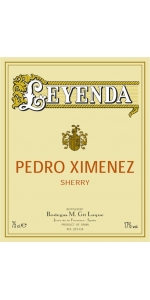
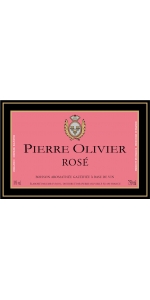
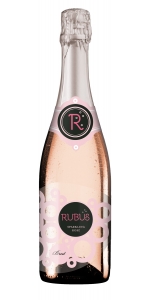
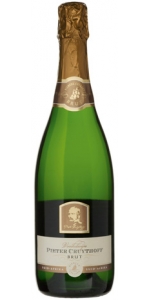
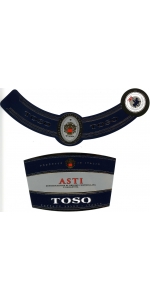
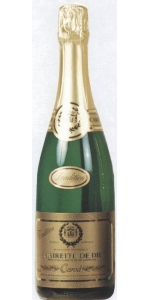
-150x300.jpg)
-150x300.jpg)
